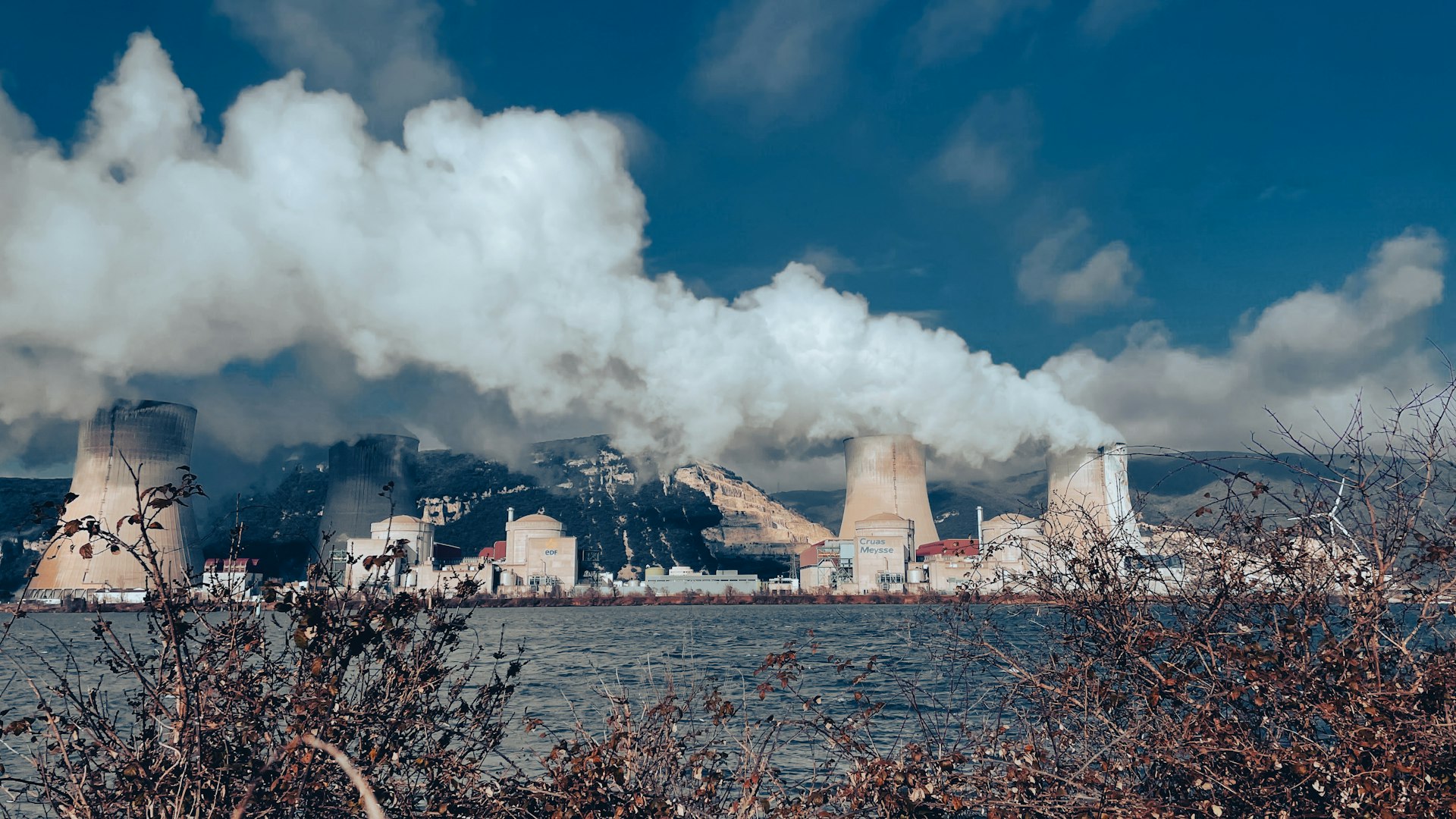Understanding the Environmental Impact of Air Pollution: Effects, Examples, and Solutions

Photo by Saksham Vikram on Unsplash
Introduction: The Far-Reaching Impacts of Air Pollution
Air pollution is a critical environmental challenge with profound consequences for ecosystems, biodiversity, and the planet’s climate system. While the human health effects of polluted air are well documented, its environmental impacts are just as severe-affecting forests, lakes, soils, wildlife, and even the stability of global weather patterns. In this article, we will explore the mechanisms by which air pollution harms the environment, provide real-world examples and case studies, and offer guidance on what individuals and communities can do to mitigate these effects and support a healthier planet.
How Air Pollution Damages Ecosystems
One of the most direct ways air pollution affects the environment is through the deposition of pollutants-such as nitrogen compounds, sulfur oxides, and ozone-onto land and water. These substances can accumulate in soil and water bodies, causing acidification and nutrient imbalances. For instance, when sulfur and nitrogen oxides are released into the atmosphere, they can return to the ground with rain and snow, a process known as acid rain. Acid rain alters the pH of lakes, rivers, and soils, damaging sensitive aquatic life, leaching vital nutrients from the soil, and making it more difficult for forests to thrive. According to the U.S. Environmental Protection Agency (EPA), atmospheric deposition of nitrogen and sulfur is a major stressor to natural ecosystems and is known to decrease biodiversity among plant communities, harm fish and other aquatic species, and damage forests and soils [2] .

Photo by Marco Cheng on Unsplash
Ground-level ozone, a secondary pollutant formed by reactions between sunlight and other pollutants, is especially damaging to plants. Ozone exposure can reduce crop yields, stunt tree growth, and decrease overall ecosystem productivity. The Massachusetts Department of Environmental Protection notes that ground-level ozone can cause significant reductions in agricultural and commercial forest yields, undermining food security and economic stability in rural areas [3] .
Air Pollution and Climate Change
Perhaps the most far-reaching impact of air pollution is its role in climate change. Many air pollutants, particularly greenhouse gases such as carbon dioxide and methane, trap heat in the atmosphere and contribute directly to global warming. As global temperatures rise, weather patterns become more erratic, sea levels rise, and the frequency of extreme weather events increases. This destabilization harms not only natural habitats but also human communities and infrastructure. Additionally, changes in temperature and precipitation patterns can further stress ecological systems, making them more susceptible to disease, invasive species, and other environmental threats [1] .
Biodiversity Loss and Habitat Degradation
Air pollution is a significant driver of biodiversity loss. Pollutants can be directly toxic to sensitive species of plants and animals, disrupt reproductive cycles, and alter the competitive balance within ecosystems. For example, nitrogen deposition from air pollution can favor fast-growing, nitrogen-loving plants at the expense of more sensitive species, leading to a decline in plant diversity and a shift in ecosystem composition. As habitats degrade, entire food webs can be disrupted, threatening the survival of species and reducing the resilience of ecosystems to environmental change [4] .
Real-world examples are abundant. Acid rain has been responsible for the decline of fish populations in lakes throughout North America and Europe. In forests, trees weakened by acid rain are more susceptible to disease and damage from insects and harsh weather. In grasslands and wetlands, nutrient enrichment from airborne nitrogen leads to algal blooms, oxygen depletion, and fish kills in water bodies.
Economic and Societal Implications
The environmental impacts of air pollution also have significant economic and societal costs. Crop damage from ozone and acid rain reduces food production and raises prices, while the loss of forest resources affects timber and recreation industries. Damage to infrastructure, such as the accelerated decay of buildings and statues from acid rain, imposes additional financial burdens on communities and governments [3] .
Moreover, these impacts are often felt most acutely by vulnerable populations, including low-income communities and those living near pollution sources. This intersection of environmental harm and social inequity underscores the importance of environmental justice in clean air policy design and implementation [1] .
Practical Steps for Individuals and Communities
While air pollution is a complex global issue, there are several actionable steps that individuals and communities can take to help reduce its environmental impacts:
- Reduce personal emissions: Use public transportation, carpool, bike, or walk when possible. Choose energy-efficient appliances and reduce energy consumption at home. These choices lower the demand for fossil fuels and decrease air pollutant emissions.
- Support clean energy: Advocate for renewable energy sources such as wind, solar, and hydroelectric power. Many utility companies offer programs that allow consumers to choose cleaner electricity options. Research your local utility provider or state energy office for participation options.
- Advocate for stronger policies: Engage with local government and community organizations to support legislation that limits emissions from industry, vehicles, and agriculture. You can find updates on air quality regulations and policy proposals through the official EPA website or your state environmental agency.
- Stay informed and take precautions: Monitor your local air quality index (AQI) using verified platforms such as AirNow.gov. On days with poor air quality, limit outdoor activities and consider using air purifiers indoors to protect your household and reduce overall exposure.
- Promote sustainable practices in agriculture: Farmers and land managers can reduce ammonia and nitrogen oxide emissions by optimizing fertilizer use, improving waste management, and implementing conservation practices. Contact your local agricultural extension office or the USDA Natural Resources Conservation Service for guidance on best practices and potential financial assistance programs.
Overcoming Challenges and Exploring Alternatives
Efforts to combat air pollution often face challenges such as economic constraints, lack of awareness, and policy resistance. Addressing these obstacles requires a multi-faceted approach:
- Community engagement: Organize educational workshops and public forums to raise awareness about the environmental impacts of air pollution and empower collective action.
- Cross-sector collaboration: Encourage cooperation between government agencies, businesses, and non-profit organizations to share resources, expertise, and best practices for reducing emissions and protecting ecosystems.
- Incentivize innovation: Policy makers can promote clean technologies by offering tax credits, grants, or other financial incentives for adopting cleaner industrial processes, electric vehicles, and renewable energy systems.
Alternative approaches may include nature-based solutions, such as reforestation and wetland restoration, which can help absorb pollutants and provide vital ecosystem services. Urban planning strategies, like increasing green spaces and implementing congestion pricing, can also reduce air pollution in cities.
How to Access Resources and Support
For those seeking more information or wishing to take action, there are several pathways:
- Visit the official U.S. Environmental Protection Agency website and search for ‘air quality’ or ‘ecosystem protection’ for the latest research, educational tools, and updates on regulations.
- Contact your state environmental agency or local health department to learn about air quality monitoring, local initiatives, and opportunities for public involvement.
- Farmers and land managers can reach out to their local Agricultural Extension Office or the USDA Natural Resources Conservation Service for technical support and resources related to sustainable land management.
- To monitor real-time air quality in your area, use established platforms such as AirNow.gov for verified updates and health advisories.
Key Takeaways and Moving Forward
Air pollution’s environmental effects are severe, diverse, and far-reaching. From acid rain and biodiversity loss to climate change and economic disruption, the consequences underscore the urgent need for coordinated action at every level of society. By understanding the science, supporting evidence-based policies, and adopting sustainable practices, individuals and communities can play a pivotal role in protecting our natural world and ensuring a healthier, more resilient future for generations to come.
References
- Clarity (2022). Is air pollution an environmental, social, or economic issue?
- U.S. Environmental Protection Agency (2023). Ecosystems and Air Quality
- Massachusetts Department of Environmental Protection (2023). Health & Environmental Effects of Air Pollution
- Department of Agriculture, Environment and Rural Affairs, Northern Ireland (2023). Effects of air pollution on natural ecosystems
- AirNow.gov (2025). Real-time air quality information
MORE FROM promohunterpro.com













